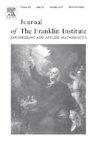Observer-based leader-centric time-varying formation tracking control for nonlinear multi-agent systems with collision avoidance
IF 3.7
3区 计算机科学
Q2 AUTOMATION & CONTROL SYSTEMS
Journal of The Franklin Institute-engineering and Applied Mathematics
Pub Date : 2024-10-16
DOI:10.1016/j.jfranklin.2024.107318
引用次数: 0
Abstract
The article introduces a novel control design methodology to achieve leader-centric time-varying formation tracking (leader-centric TVFT) with collision avoidance for Lipschitz nonlinear multi-agent systems (MASs) equipped with a leader-driven formation system. This methodology addresses key challenges, including actuator bias faults and leader maneuvering. It employs two novel control schemes: a collision avoidance scheme and a formation observer-based TVFT (FO-based TVFT) control scheme. The collision avoidance scheme ensures safe operation by preventing inter-agent collisions, while the FO-based TVFT control scheme enables followers to achieve TVFT for leader-driven formations while tracking the leader. To implement this FO-based TVFT control scheme, each follower employs a formation observer (FO) to continuously estimate the leader’s dynamically driven formations in real-time, facilitating responsive formation tracking. Notably, this FO-based TVFT control scheme establishes a novel framework for leader-centric TVFT (i.e., TVFT for leader-driven formations resulting from leader-driven formation switching) in MASs. Furthermore, this control methodology is specifically designed for Lipschitz nonlinear MASs operating under potential actuator bias faults and unpredictable leader maneuvering. It guarantees that the collective formation tracking error of followers is uniformly ultimately bounded (UUB), based on Lyapunov’s stability theory. Finally, an illustrative example validates the effectiveness of the proposed approach.
基于观测器的以领导者为中心的时变编队跟踪控制,用于具有防碰撞功能的非线性多代理系统
文章介绍了一种新颖的控制设计方法,以实现以领导者为中心的时变编队跟踪(以领导者为中心的 TVFT),并避免配备领导者驱动编队系统的 Lipschitz 非线性多代理系统(MAS)发生碰撞。该方法解决了包括致动器偏差故障和领导者操纵在内的关键难题。它采用了两种新颖的控制方案:避免碰撞方案和基于编队观测器的 TVFT(基于 FO 的 TVFT)控制方案。碰撞规避方案通过防止代理间的碰撞来确保安全运行,而基于 FO 的 TVFT 控制方案则使跟随者能够在跟踪领导者的同时实现领导者驱动编队的 TVFT。为了实现这种基于 FO 的 TVFT 控制方案,每个跟随者都采用了一个编队观测器 (FO),以持续实时地估计领导者的动态驱动编队,从而促进响应性编队跟踪。值得注意的是,这种基于 FO 的 TVFT 控制方案为 MAS 中以领导者为中心的 TVFT(即由领导者驱动的队形切换所产生的领导者驱动队形的 TVFT)建立了一个新颖的框架。此外,这种控制方法专为在潜在致动器偏差故障和不可预测的领导者操纵下运行的 Lipschitz 非线性 MAS 而设计。它基于李亚普诺夫稳定性理论,保证了跟随者的集体编队跟踪误差是均匀最终有界的(UUB)。最后,一个示例验证了所提方法的有效性。
本文章由计算机程序翻译,如有差异,请以英文原文为准。
求助全文
约1分钟内获得全文
求助全文
来源期刊
CiteScore
7.30
自引率
14.60%
发文量
586
审稿时长
6.9 months
期刊介绍:
The Journal of The Franklin Institute has an established reputation for publishing high-quality papers in the field of engineering and applied mathematics. Its current focus is on control systems, complex networks and dynamic systems, signal processing and communications and their applications. All submitted papers are peer-reviewed. The Journal will publish original research papers and research review papers of substance. Papers and special focus issues are judged upon possible lasting value, which has been and continues to be the strength of the Journal of The Franklin Institute.

 求助内容:
求助内容: 应助结果提醒方式:
应助结果提醒方式:


